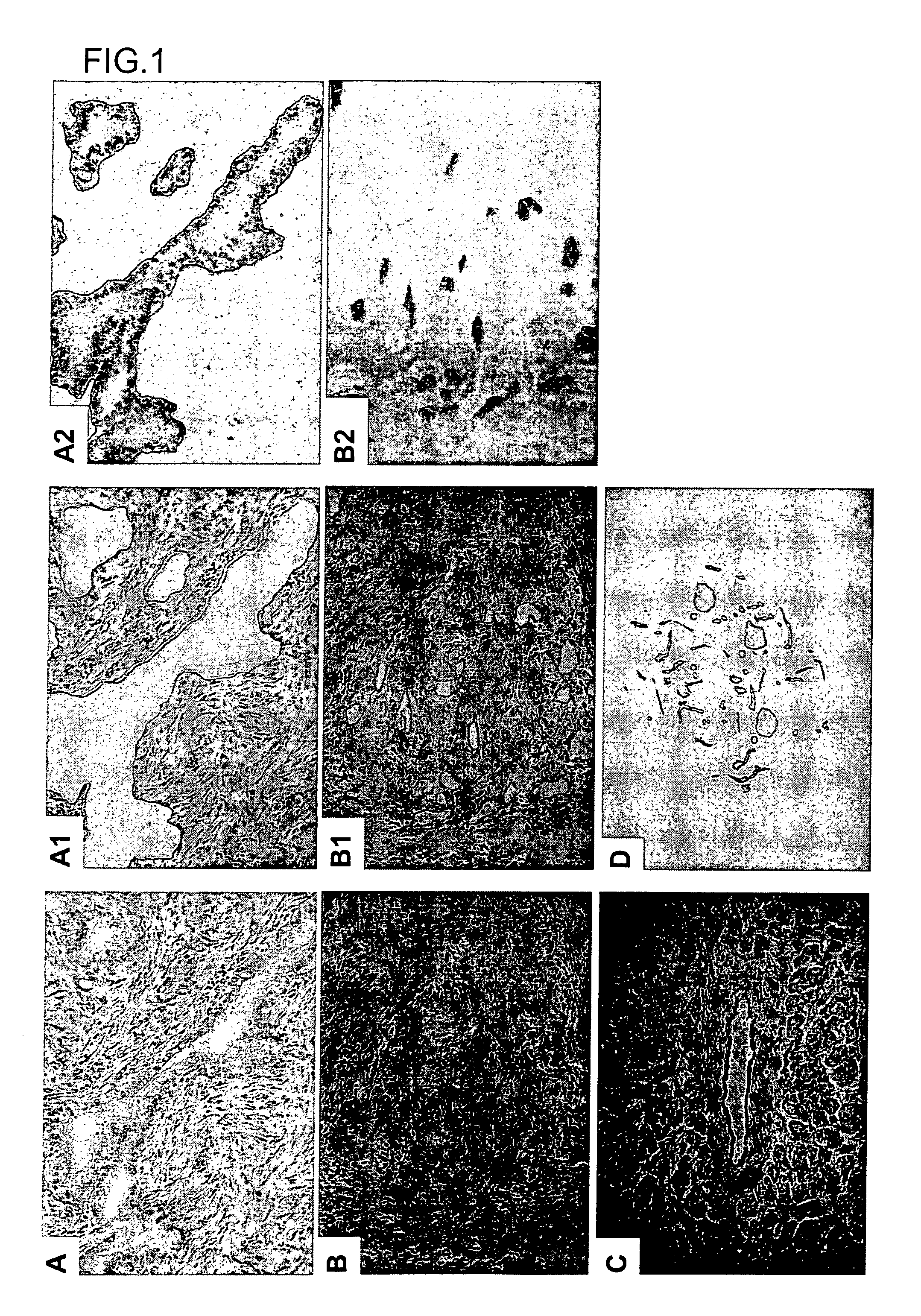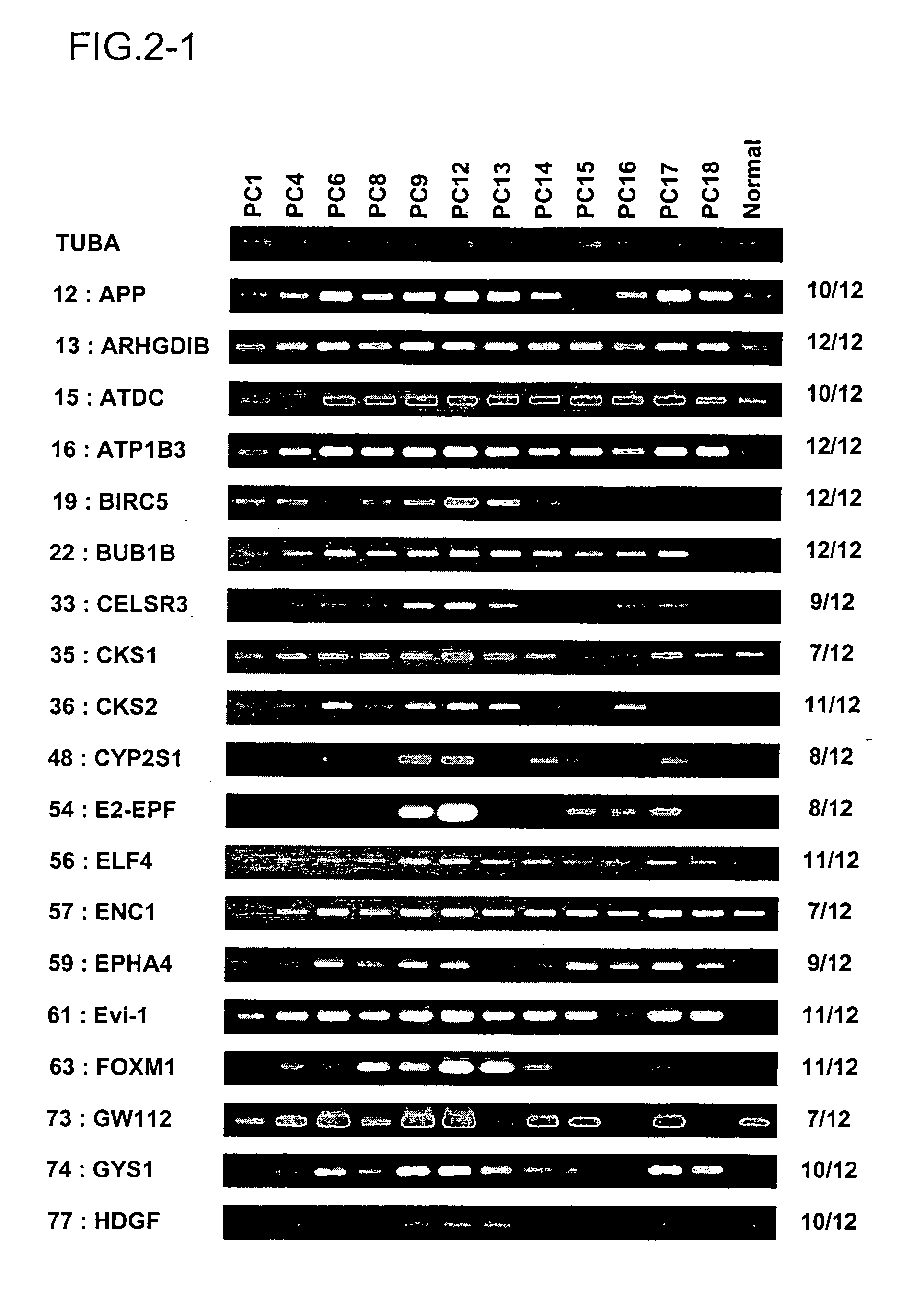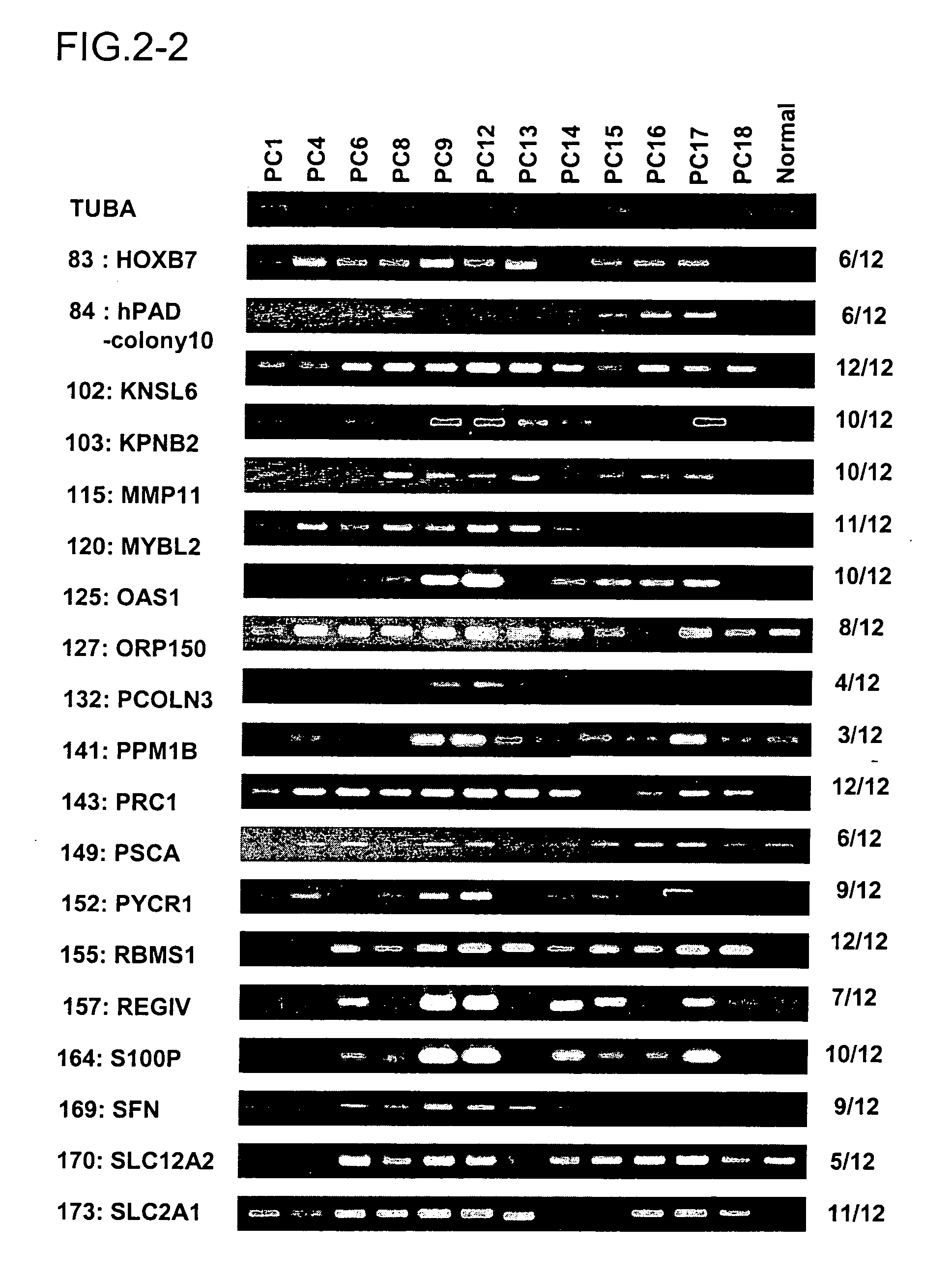Method for diagnosing pancreatic cancer
a pancreatic cancer and cancer technology, applied in the field of pancreatic cancer diagnosis, can solve the problems of poor prognosis of this malignancy, and no tumor marker identified that allows reliable screening
- Summary
- Abstract
- Description
- Claims
- Application Information
AI Technical Summary
Benefits of technology
Problems solved by technology
Method used
Image
Examples
example 1
Preparation of Test Samples
[0257] The invention will be further described in the following examples, which do not limit the scope of the invention described in the claims.
[0258] Tissue obtained from diseased tissue (e.g., epithelial cells from PNC) and normal tissues was evaluated to identify genes which are differently expressed or a disease state, e.g., PNC. The assays were carried out as follows.
Patients, Tissue Samples and Laser Microdissection
[0259] Tissue samples of pancreatic cancer (n=18) and normal pancreas (n=7) were obtained from surgical specimens from patients with informed consent. All pancreatic cancer tissues had histologically confirmed invasive ductal carcinoma. Clinicopathological features of the patients we used in this study are summarized in Table 1. Since almost all pancreatic ductal cells from corresponding normal tissue blocks showed dysplastic changes mostly because of downstream ductal obstruction, ductal cells for only 4 of the 18 pancreatic cancer t...
example 2
Identification of PNC—Associated Genes
[0273] The up- or down-regulated genes were identified common to pancreatic cancer using following criteria; 1) genes which were able to obtain expression data in more than 50% cancer cases, and 2) genes whose expression ratio was more than 5.0 in pancreatic cancer cells (defined as up-regulated genes) or genes whose expression ratio was under 0.2 (defined as down-regulated genes) in more than 50% of informative cases. Moreover, 3) the genes which were able to calculate in 33 to 50% cases and which expressed the expression ratio of more than 5.0 in all of that cases were also evaluated as up-regulated genes.
[0274] Identification of Genes with Clinically Relevant Expression Patterns in PNC Cells
[0275] The expression of approximately 23,000 genes in 18 pancreatic cancer patients was examined using cDNA microarray. Individual data were excluded when both Cy5 and Cy3 signals were under cut-off values. Two hundred fifty-nine up-regulated genes wer...
example 3
Reduction of the Expression of the Genes PCDH1, CDH3 or GPR107 and Growth Suppression of Cancer Cells by siRNA
Cell Lines and Tissue Specimens
[0357] Human Pancreatic cell lines PK45P, KLM1 and MIA-PaCa2 (ATCC Number: CRL-1420) were obtained from the Cell Resource Center for Biomedical Research, Institute of Development, Aging and Cancer, Tohoku University. All these cells are publicly available.
Isolation of Over-Expressing Genes in PDA Ca Cells by Using cDNA Microarray
[0358] Fabrication of the cDNA microarray slides has been described (Ono K, Tanaka T, Tsunoda T, Kitahara O, Kihara C, Okamoto A, Ochiai K, Takagi T, and Nakamura Y. Cancer Res., 60: 5007-5011, 2000). For each analysis of expression profiles it was prepared duplicate sets of cDNA microarray slides containing approximately 23,040 DNA spots, to reduce experimental fluctuation. Briefly, total RNA was purified from PDACa cells and normal pancreatic duct epithelium microdissected from 18 pancreatic cancer tissues. T7-b...
PUM
| Property | Measurement | Unit |
|---|---|---|
| weight | aaaaa | aaaaa |
| Tm | aaaaa | aaaaa |
| nucleic acid | aaaaa | aaaaa |
Abstract
Description
Claims
Application Information
 Login to View More
Login to View More - R&D
- Intellectual Property
- Life Sciences
- Materials
- Tech Scout
- Unparalleled Data Quality
- Higher Quality Content
- 60% Fewer Hallucinations
Browse by: Latest US Patents, China's latest patents, Technical Efficacy Thesaurus, Application Domain, Technology Topic, Popular Technical Reports.
© 2025 PatSnap. All rights reserved.Legal|Privacy policy|Modern Slavery Act Transparency Statement|Sitemap|About US| Contact US: help@patsnap.com



